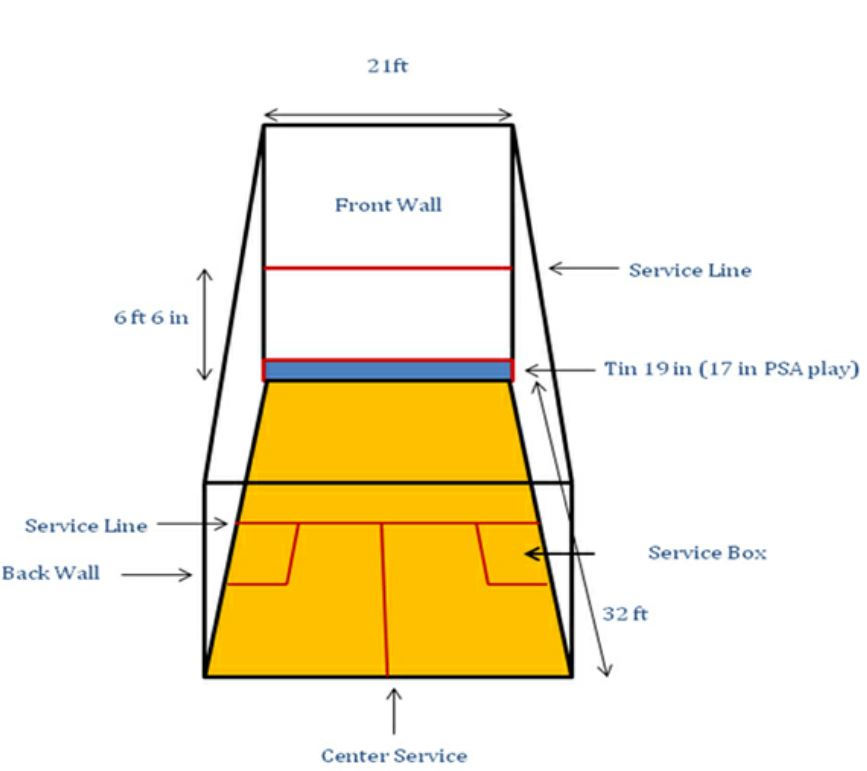RAPID BALL
Rapid Ball is a late 20th century racquet sport development, created by
Peter V. Haighton. Peter had been playing Squash for over thirty-five
years and suffered from the bodily wear and tear that comes with playing multiple
times per week, over that long a period of time. He did not want to stop playing,
but wanted a racquet sport that was not as demanding on his body as Squash,
so he invented Rapid
Ball.
Rapid Ball is an indirect racquet sport that combines the
attributes of
Squash and Racquetball. The sport is played in a standard size
Squash court, but uses a Racquetball racquet and standard Racquetball ball for service and rallies. Three factors enhance the ease of play and reduce
the body stresses: the use of a smaller court, a ball that is bouncier than a
Squash ball, and a greater ability to utilize the back wall for returns.
Combined, these factors significantly reduce the amount of side-to-side and forward
and back movement that players have to execute in order to retrieve the ball
for returns and gets in a regular Squash match.
Rapid Ball has proved to be popular in South America, Europe, and the United
Kingdom. The sport has been promoted as a solution for the problem of reduced
court use in fitness clubs that primarily cater to Squash play. Many older
participates want to, and are willing to continue playing racquet sports, but
not at the same physical intensity level required to play Squash. Rapid Ball provides a very good work out, with long rallies, but not the same physical exertion
required in a Squash or Racquetball
game.
Rapid Ball, is played in a singles format only, and follows most Squash rules. Starting from either court position, one serve (similar to Squash)
starts a game. The server is required to bounce the ball first as part of the
serve (similar to Racquetball) hitting the ball to the front wall bouncing
back inside of the opponent’s quarter without touching the side or back wall
before it bounces. Points can only be scored by the side that is serving. Rally
point scoring is not used. Games are played to 15 points, but if a 14-14 score
is achieved then the non-serving player may choose to play first to fifteen (15)
points or first too seventeen (17) points, either with a one point winning margin.
Matches are best two of three games, or best three of five games. [Note by Allan B. Christensen: Actually,
point-a-rally where both players can score a point in each rally, can be used
as well, and the scoring system can be best of 5 games to 8 where, at 7 all,
the receiving part decides whether to play to 8 or 10 - see Rules].
Rapid Ball does have one unique scoring rule, "when the striker hits the
ball against the front, front and side, or side and front walls and the ball
then bounces on the floor and goes out of court without being touched by the
opponent, then the striker wins two points."
Governing Organization: None
Racquet/Paddle: Standard Racquetball racquet
Ball: Standard Racquetball ball
References and Sources
1. Introduction To Rapid Ball, retrieved August 3, 2010, http://www.rapid-ball.co.uk/introduction_rapid_ball.htm
2. Rapid Ball, retrieved August 3, 2010, http://en.wikipedia.org/wiki/Rapid_ball
3. What’s That Racket?, retrieved August 3, 2010, http://honors.usf.edu/documents/Thesis/U36145763.pdf
4. What Sports Use A Racket, retrieved September 22, 2010, http://wiki.answers.com/Q/What_sports_use_a_racket
Rapid Ball
(International Squash) Court:
